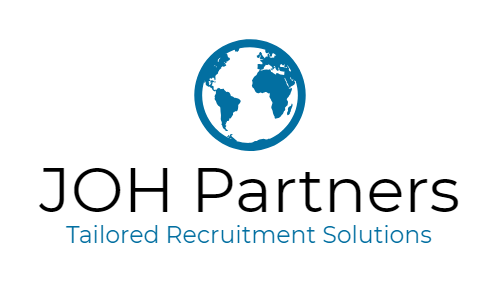A stakeholder interview is a crucial step in any project, as it helps gather context, identify business goals, align vision, and increase buy-in and communication. Conducting effective stakeholder interviews is essential for successful stakeholder engagement and management.
When preparing for a stakeholder interview, it’s important to have a clear goal and a set of well-thought-out types of questions. Stakeholder interviews can be conducted at any stage of a project, but early interviews are particularly beneficial in establishing rapport and gaining valuable insights.
During a stakeholder interview, the interviewer should remain neutral, actively listen, and ask follow-up questions to gather deeper insights. By understanding the stakeholder’s role, business goals, challenges, and preferred communication methods, project managers and designers can align their work with stakeholder expectations.
Stakeholder interviews play a vital role in the design process, providing valuable insights into user needs and expectations. By integrating stakeholder interviews into user research and the overall UX design process, designers can create successful and user-centered design solutions.
Despite potential challenges, such as difficult stakeholders or communication barriers, stakeholder interviews are worth the effort for effective stakeholder engagement. Patience and empathy are key in overcoming these challenges and maintaining open and productive communication throughout the process.
Key Takeaways:
- Stakeholder interviews are essential for project success and stakeholder engagement.
- Prepare well-thought-out questions to gather valuable insights.
- Early stakeholder interviews help establish rapport and alignment.
- Remain neutral, actively listen, and ask follow-up questions during the interview.
- Integrate stakeholder interviews into user research and the design process for user-centered solutions.
Understanding the Importance of Stakeholder Interviews
Stakeholder interviews are a crucial component of successful project management and stakeholder engagement. These interviews provide valuable insights into the project’s landscape, gather historical context, and identify key business objectives. By conducting stakeholder interviews, project managers and designers can ensure that they have a clear understanding of stakeholder perspectives and align their work with the goals and expectations of the project.
One of the primary benefits of stakeholder interviews is that they help stakeholders feel heard and valued. By engaging stakeholders in meaningful conversations and actively listening to their input, project teams can increase stakeholder buy-in, foster trust, and establish open communication channels throughout the design process. The insights gained from stakeholder interviews can also inform decision-making and guide the development of effective strategies and solutions.
Stakeholder interviews should ideally be conducted early in the project, allowing for the identification of potential risks, challenges, and opportunities. These interviews can be customized based on the unique needs and goals of each project, ensuring that the right questions are asked to gather the most relevant information. By understanding stakeholder perspectives, motivations, and expectations, project teams can better tailor their approach, prioritize key objectives, and ultimately deliver successful outcomes.
To illustrate the importance of stakeholder interviews, below is a table summarizing the key benefits and outcomes:
| Benefits of Stakeholder Interviews | Outcomes |
|---|---|
| 1. Gather historical context | 1. Increased stakeholder buy-in |
| 2. Identify business objectives | 2. Improved communication and collaboration |
| 3. Align on shared vision | 3. Enhanced understanding of stakeholder perspectives |
| 4. Increase stakeholder involvement | 4. More informed decision-making |
| 5. Mitigate risks and challenges | 5. Tailored strategies and solutions |
When to Conduct Stakeholder Interviews
Stakeholder interviews are a valuable tool for gathering insights and driving project success. But when is the best time to conduct them? Stakeholder interviews can be done at any stage of the project, but it is generally recommended to conduct them early on. By conducting interviews early in the project, stakeholders feel heard and their input is incorporated from the beginning, leading to better alignment with project goals and increased stakeholder engagement.
There are several key moments when stakeholder interviews can be particularly beneficial. Firstly, stakeholder interviews can kick off a project, setting the stage for successful collaboration. These initial interviews help establish rapport, build relationships, and ensure that all stakeholders are aligned on the project’s purpose and objectives.
Secondly, stakeholder interviews can be valuable when new stakeholders join the project. These interviews allow new team members to get up to speed quickly, understand the project’s context, and contribute their expertise from the start. This helps maintain a cohesive team and ensures that everyone is on the same page.
Lastly, stakeholder interviews can also be conducted throughout the project as needed. Sometimes, project goals or stakeholder needs may change, requiring a reset or realignment. In these cases, stakeholder interviews can help identify any shifts in priorities, gather new insights, and adapt the project accordingly.
Types of Stakeholder Interviews
When conducting stakeholder interviews, there are different types to consider based on the project goals and desired outcomes. Here are a few examples:
- Exploratory Interviews: These interviews focus on gathering information, understanding stakeholders’ perspectives, and identifying potential challenges and opportunities.
- Requirements Gathering Interviews: These interviews aim to define project requirements, clarify expectations, and align stakeholders on deliverables and timelines.
- User Feedback Interviews: These interviews allow stakeholders to provide feedback on prototypes or early versions of the project, helping to shape the final product.
By tailoring the type of interview to the specific needs of the project, stakeholders can be engaged in a meaningful way and their input can be utilized effectively throughout the project lifecycle.
How to Prepare for a Stakeholder Interview
Preparing for a stakeholder interview is essential for ensuring a productive and insightful conversation. Before the interview, it is important to set a clear goal and identify the specific information you hope to gather. This will guide the development of your questions and enable you to focus on the most important aspects of stakeholder management and stakeholder expectations.
One key aspect of preparation is to develop a set of questions that cover a range of topics. These questions should explore the stakeholder’s role in the project, their understanding of the business goals, and their expectations for success. It is also important to inquire about their past experience and expertise, as well as their preferred methods of communication. By preparing targeted questions, you can guide the conversation in a way that maximizes the value of the interview.
Additionally, it is crucial to create a comfortable and welcoming atmosphere for the stakeholder. Introduce yourself and your role in the project, and make sure to express your appreciation for their time and input. Building rapport and trust with the stakeholder will encourage open and honest communication, leading to deeper insights and a more fruitful interview.
Sample Stakeholder Interview Questions
- Can you tell me more about your role in the project and your responsibilities?
- What are the key business goals you hope to achieve through this project?
- How do you define success for this project, both in the short term and long term?
- Based on your experience, what are the key challenges and obstacles we may encounter?
- What is your preferred method of communication and how frequently would you like to be updated on the project?
By adequately preparing for a stakeholder interview, you can ensure a productive and successful conversation that generates valuable insights and aligns stakeholders’ expectations with the project goals. With the right questions and a welcoming atmosphere, you can establish a strong foundation for stakeholder engagement and project success.
Conducting a Stakeholder Interview
When it comes to conducting a stakeholder interview, it is important to approach the conversation with professionalism and empathy. The goal of the interview is to gather valuable insights from stakeholders and understand their perspectives, priorities, and expectations. Here are some key considerations to keep in mind:
- Prepare: Before the interview, review the prepared questions and familiarize yourself with the stakeholder’s background and role. This will help you guide the conversation and ask relevant follow-up questions.
- Remain neutral: It is crucial to approach the interview with an impartial mindset. Avoid expressing personal opinions or biases that may influence the stakeholder’s responses.
- Active listening: Actively listen to what the stakeholder is saying and pay attention to non-verbal cues. This will help you understand their needs and concerns more effectively.
- Open and relaxed atmosphere: Create an environment where the stakeholder feels comfortable sharing their thoughts and ideas. Encourage them to speak freely and assure them that their input is valued.
Remember, the stakeholder interview is an opportunity to build strong relationships, foster collaboration, and gain insights that will shape the project. By conducting interviews in a professional and empathetic manner, you can establish trust and create a foundation for successful stakeholder engagement.
Key Questions to Ask in a Stakeholder Interview
When conducting a stakeholder interview, it is crucial to ask the right questions in order to gather valuable insights. The following set of questions will help you understand the stakeholder’s role, business goals, success metrics, project challenges, history and expertise, and preferred communication methods.
1. Stakeholder’s Role:
- What is your role in the project?
- What are your responsibilities and decision-making authority?
2. Business Goals:
- What are the main business goals for this project?
- How do you define success for this project?
3. Success Metrics:
- How will you measure the success of this project?
- What are the key performance indicators (KPIs) you are tracking?
4. Project Challenges:
- What are the main challenges or obstacles you anticipate in achieving the project goals?
- Are there any particular risks or concerns you have regarding the project?
5. History and Expertise:
- What is your experience working on similar projects?
- What expertise or knowledge do you bring to the project?
6. Preferred Communication Methods:
- How do you prefer to receive project updates?
- What is the best way to communicate with you regarding project matters?
Asking these questions will provide you with a comprehensive understanding of the stakeholder’s perspective, which will enable you to align your work with their goals and expectations. It will also help you identify any potential roadblocks and tailor your communication strategies to ensure effective stakeholder involvement throughout the project.
By utilizing these key questions, you can gather valuable research findings and gain insights into stakeholder perspectives. These insights will help shape your project strategy, enhance stakeholder engagement, and drive project success.
The Value of Stakeholder Interviews in the Design Process
Stakeholder interviews play a crucial role in the UX design process. By engaging with stakeholders, designers gain valuable insights into user needs, expectations, and preferences. These interviews help shape the design process, enabling designers to create solutions that meet the diverse requirements of stakeholders.
Stakeholder interviews provide an opportunity to understand the goals and objectives of the project from various perspectives. Through open and meaningful conversations with stakeholders, designers can gather vital information that informs the entire design process. By involving stakeholders early on, designers can ensure that user research is aligned with stakeholder expectations, which ultimately leads to the creation of more successful and targeted design solutions.
Integrating stakeholder interviews into user research allows designers to gather insights that go beyond surface-level information. By digging deep into stakeholder perspectives, designers can uncover valuable insights that may influence the overall design strategy. These insights help designers make informed decisions and prioritize design elements that truly meet the needs of both stakeholders and users.
Benefits of Stakeholder Interviews in the UX Design Process
1. User-Centric Design: Stakeholder interviews bring the user’s voice into the design process. By understanding the needs and expectations of stakeholders, designers can create user-centered experiences that cater to their target audience.
2. Alignment and Collaboration: Stakeholder interviews foster collaboration and alignment between project stakeholders and designers. By involving stakeholders in the design process, designers can ensure that everyone is on the same page, minimizing misunderstandings and maximizing the chances of project success.
3. Insightful Research: Stakeholder interviews provide unique insights that complement user research findings. By considering stakeholder perspectives, designers can gain a comprehensive understanding of the project’s context, goals, and constraints, allowing for more effective design decisions.
| Benefits of Stakeholder Interviews in the Design Process | Key Takeaways |
|---|---|
| 1. User-Centric Design | By involving stakeholders, designers can create user-centered experiences. |
| 2. Alignment and Collaboration | Stakeholder interviews foster collaboration and align stakeholders with the design process. |
| 3. Insightful Research | Stakeholder interviews provide unique insights that complement user research findings. |
Overcoming Challenges in Stakeholder Interviews
Stakeholder interviews play a critical role in project success, but they can also present challenges that need to be navigated effectively. One of the most common challenges is dealing with difficult stakeholders. These individuals may have strong opinions, conflicting interests, or a lack of willingness to engage in the interview process. It is crucial to approach these situations with patience and empathy, seeking to understand their perspectives and address any concerns or reservations they may have. By actively listening and demonstrating a genuine commitment to their input, it becomes possible to build trust and establish a collaborative environment that fosters effective stakeholder communication.
Another challenge that may arise in stakeholder interviews is communication barriers. Stakeholders may come from diverse backgrounds, have varying levels of expertise, or speak different languages. To overcome these barriers, it is essential to adopt clear and concise communication strategies. This may involve simplifying complex concepts, using visual aids or examples to support explanations, or leveraging interpretation services when necessary. By ensuring that communication is accessible and inclusive, stakeholders can fully participate in the interview process, leading to more accurate insights and better project outcomes.
Effectively managing stakeholder engagement is another challenge that can arise in stakeholder interviews. Stakeholders often have competing priorities, limited availability, or differing levels of involvement. To address these challenges, it is crucial to establish clear expectations, timelines, and communication channels from the outset. Regularly updating stakeholders on the progress of the project and providing opportunities for their input can help maintain their engagement and commitment. By actively addressing their concerns and involving them in the decision-making process, stakeholders are more likely to feel valued and motivated to contribute to the project’s success.

Tips for Overcoming Challenges:
- Approach difficult stakeholders with patience and empathy
- Adopt clear and concise communication strategies
- Provide interpretation services, if necessary
- Establish clear expectations and communication channels
- Regularly update stakeholders and involve them in the decision-making process
By recognizing and addressing these challenges in stakeholder interviews, project managers and designers can ensure that they navigate the interview process effectively and gather the necessary insights for project success.
Conclusion
Stakeholder interviews are essential in driving successful stakeholder engagement and project management. These interviews provide valuable insights into the perspectives and expectations of stakeholders, helping project managers and designers align their work with the goals of the project.
By asking the right stakeholder interview questions, project teams can gather context, identify business objectives, and foster open communication. These interviews should be conducted early in the project to ensure that stakeholders feel heard and to increase buy-in and collaboration throughout the design process.
Preparing for a stakeholder interview is crucial. Setting clear goals, preparing relevant questions, and building rapport with stakeholders are key steps to ensure a productive conversation. By actively listening and asking follow-up questions, project managers and designers can gain deeper insights into stakeholder perspectives, which will ultimately guide the creation of successful design solutions.
In conclusion, stakeholder interviews play a crucial role in stakeholder management and project success. By conducting thorough and well-prepared interviews, project teams can gather valuable insights, align their work with stakeholder expectations, and foster effective communication throughout the design process.
FAQ
What is a stakeholder interview?
A stakeholder interview is a conversation with someone who has a vested interest in a project. It helps gather context, identify business goals, align on a shared vision, and increase buy-in and communication.
Why are stakeholder interviews important?
Stakeholder interviews provide insights into the project’s landscape, gather historical context, and identify business objectives. They help stakeholders feel heard, increase buy-in, and establish open communication channels throughout the design process.
When should stakeholder interviews be conducted?
Stakeholder interviews can be done at any stage of the project, but it is best to conduct them early on. They can kick off a project, welcome new stakeholders, or reset the project when needed. Early interviews help stakeholders feel heard and provide valuable insights.
How should I prepare for a stakeholder interview?
Before a stakeholder interview, it is important to set a goal for the interview and prepare relevant questions. These questions should cover success metrics, priorities, history and expertise, and process and workflow.
What should I keep in mind when conducting a stakeholder interview?
When conducting a stakeholder interview, it is important to remain neutral, actively listen, and ask follow-up questions. The interview should be one-on-one and conducted in a relaxed and open atmosphere. Basic interview etiquette, such as taking notes and making eye contact, should be followed.
What are some key questions to ask in a stakeholder interview?
A stakeholder interview should cover topics such as the stakeholder’s role, business goals, success metrics, project challenges, history and expertise, and preferred communication methods. It is also important to ask open-ended questions to gather deeper insights and to end the interview by asking if there is anything else the stakeholder would like to share.
How do stakeholder interviews benefit the design process?
Stakeholder interviews provide valuable insights into user needs and expectations, help shape the design process, and guide the creation of successful design solutions. They should be integrated into user research and the overall UX design process.
What challenges may arise during stakeholder interviews?
Stakeholder interviews can sometimes present challenges, such as difficult stakeholders or communication barriers. It is important to approach these challenges with patience and empathy, and to focus on maintaining effective stakeholder engagement throughout the process.
How do stakeholder interviews contribute to project success?
Stakeholder interviews are a valuable tool for gathering insights and driving project success. By conducting thorough and well-prepared interviews, project managers and designers can ensure that they have a clear understanding of stakeholder perspectives and can align their work with the goals and expectations of the project.




